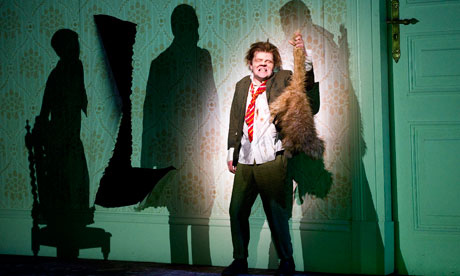The great expressionist experiment
A number of productions are dragging British theatre away from the grip of realism – with sensational results.

"Expressionist" is one of those handy terms that we critics use rather promiscuously. Historically, it was coined by a French painter in 1901 to suggest an alternative to impressionism. Later it was applied to a school of European dramatists in the years from 1907 to 1925. Now it is widely applied to anything that is non-realistic. But, however randomly deployed, it has its value. And what is striking is how applicable it is to much of today's theatre. In the past week I have seen three productions that all, in different ways, could be labelled expressionist.
The most sensational was Simon McBurney's Complicite/ENO production of the Russian opera, A Dog's Heart, at the London Coliseum. Andrew Clements has expressed reservations about Raskatov's score. But the staging is the most exciting and coherent piece of expressionism I have seen on a British stage. McBurney and his designer, Michael Levine, use every trick in the book: puppetry, video, distorted angles and perspectives so that the central door has an Alice in Wonderland-like scale and a maid at one point pops her head round it horizontally while 10ft off the ground.
For the rest of the article
The Guardian